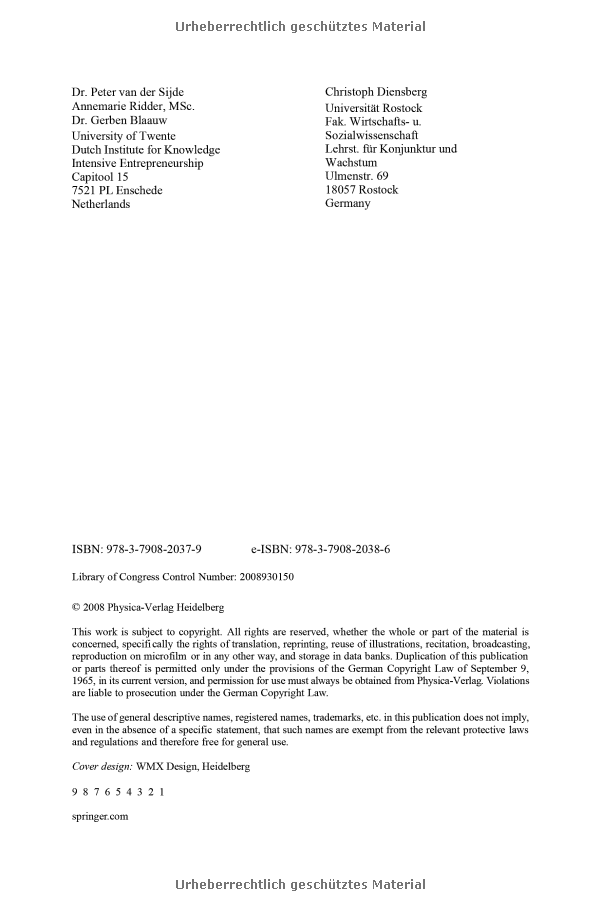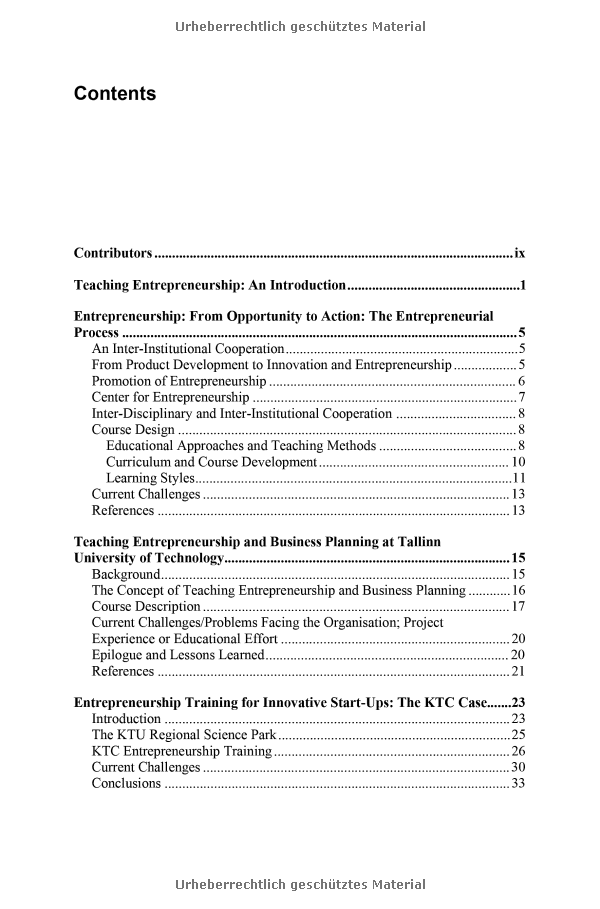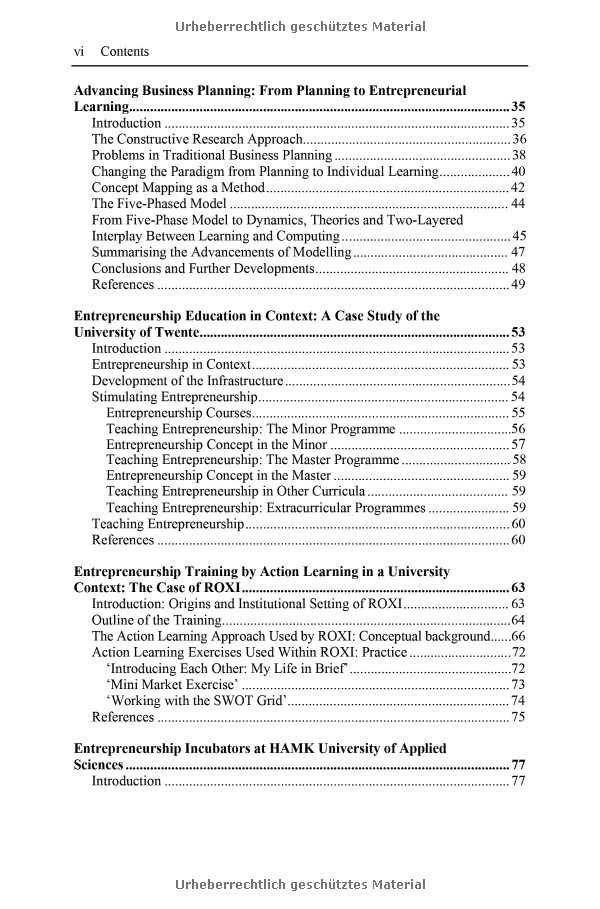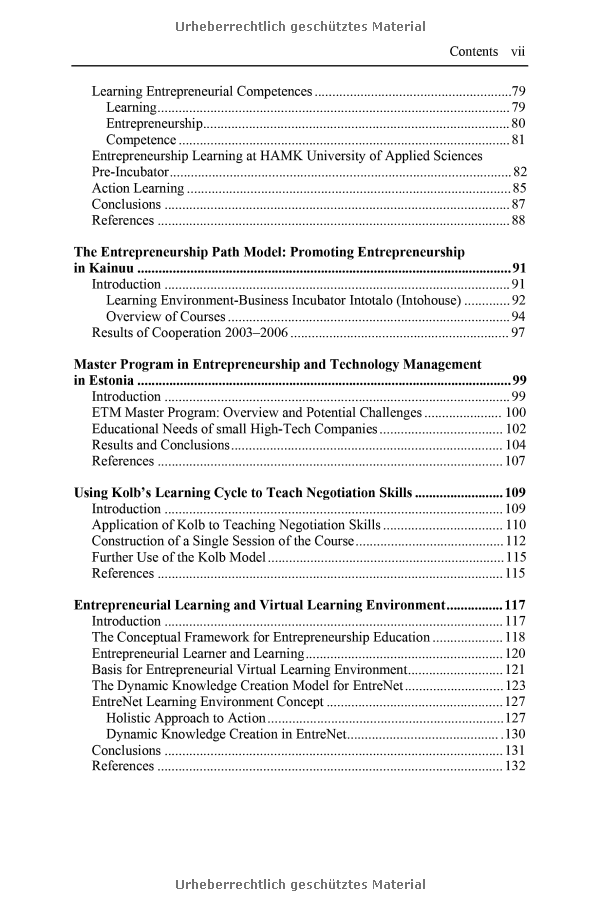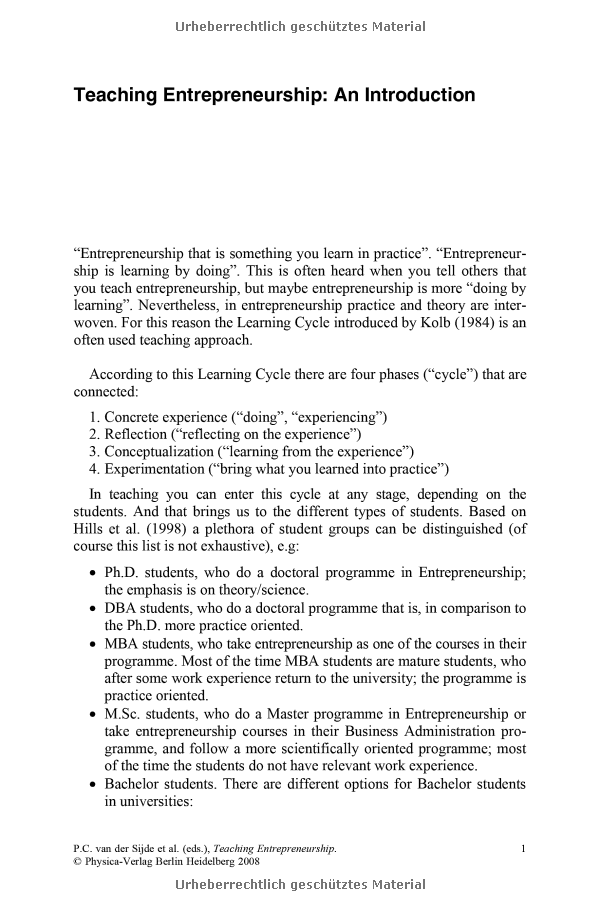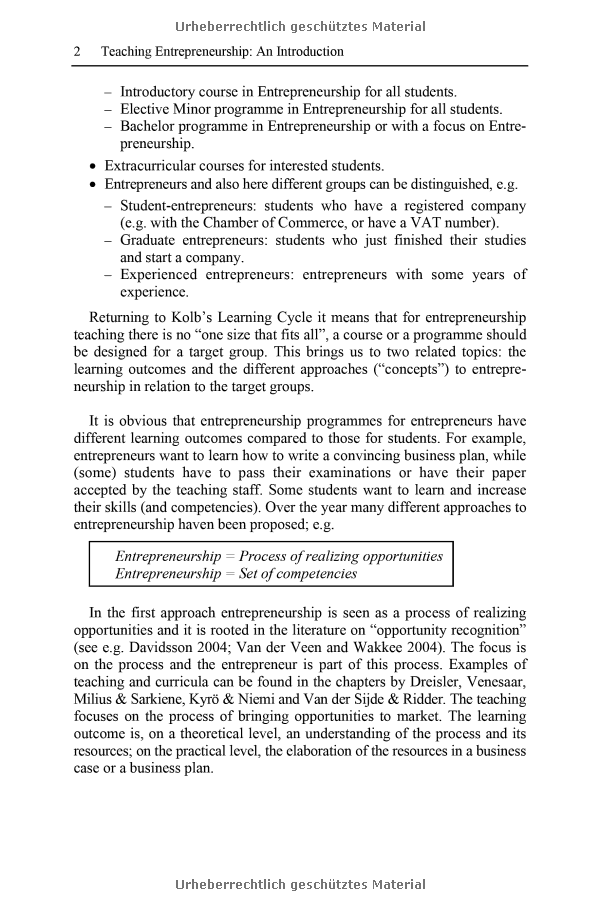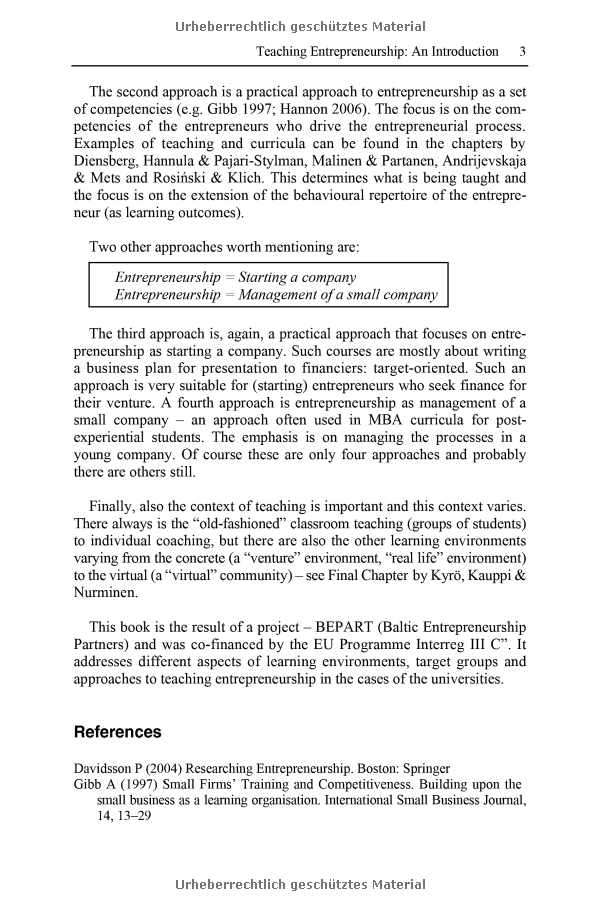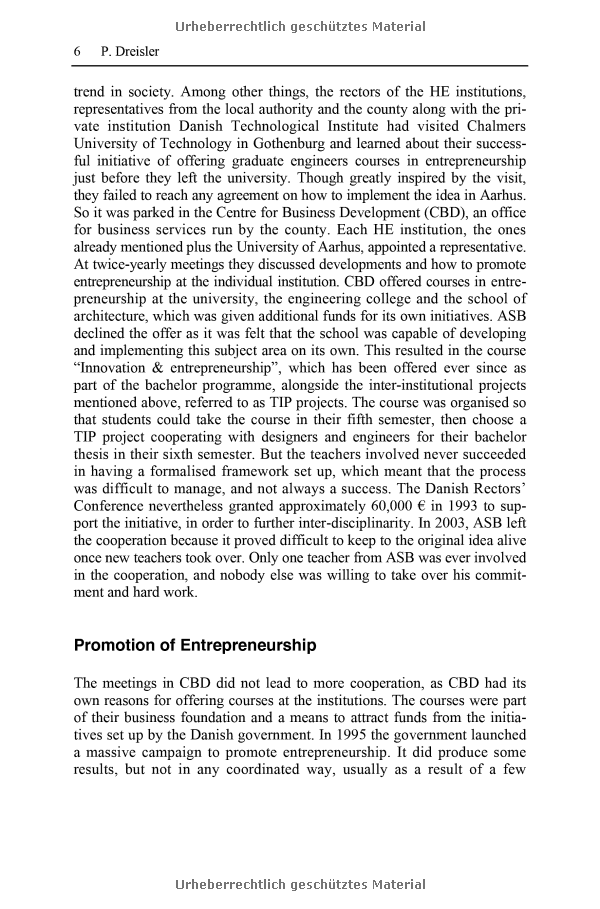
Teaching Entrepreneurship:Cases for Education and Training(Contributions to Management Science)
管理经济学
¥
1996.00
售 价:
¥
1597.00
优惠
平台大促 低至8折优惠
发货周期:外国库房发货,通常付款后3-5周到货
出 版 社
出版时间
2008年09月12日
装 帧
精装
页 码
133
开 本
语 种
英文
综合评分
暂无评分
- 图书详情
- 目次
- 买家须知
- 书评(0)
- 权威书评(0)
图书简介
“Entrepreneurship that is something you learn in practice”. “Entreprene- ship is learning by doing”. This is often heard when you tell others that you teach entrepreneurship, but maybe entrepreneurship is more “doing by learning”. Nevertheless, in entrepreneurship practice and theory are int- woven. For this reason the Learning Cycle introduced by Kolb (1984) is an often used teaching approach. According to this Learning Cycle there are four phases (“cycle”) that are connected: 1. Concrete experience (“doing”, “experiencing”) 2. Reflection (“reflecting on the experience”) 3. Conceptualization (“learning from the experience”) 4. Experimentation (“bring what you learned into practice”) In teaching you can enter this cycle at any stage, depending on the students. And that brings us to the different types of students. Based on Hills et al. (1998) a plethora of student groups can be distinguished (of course this list is not exhaustive), e.g: Ph.D. students, who do a doctoral programme in Entrepreneurship; the emphasis is on theory/science. DBA students, who do a doctoral programme that is, in comparison to the Ph.D. more practice oriented. MBA students, who take entrepreneurship as one of the courses in their programme. Most of the time MBA students are mature students, who after some work experience return to the university; the programme is practice oriented.
本书暂无推荐
本书暂无推荐












